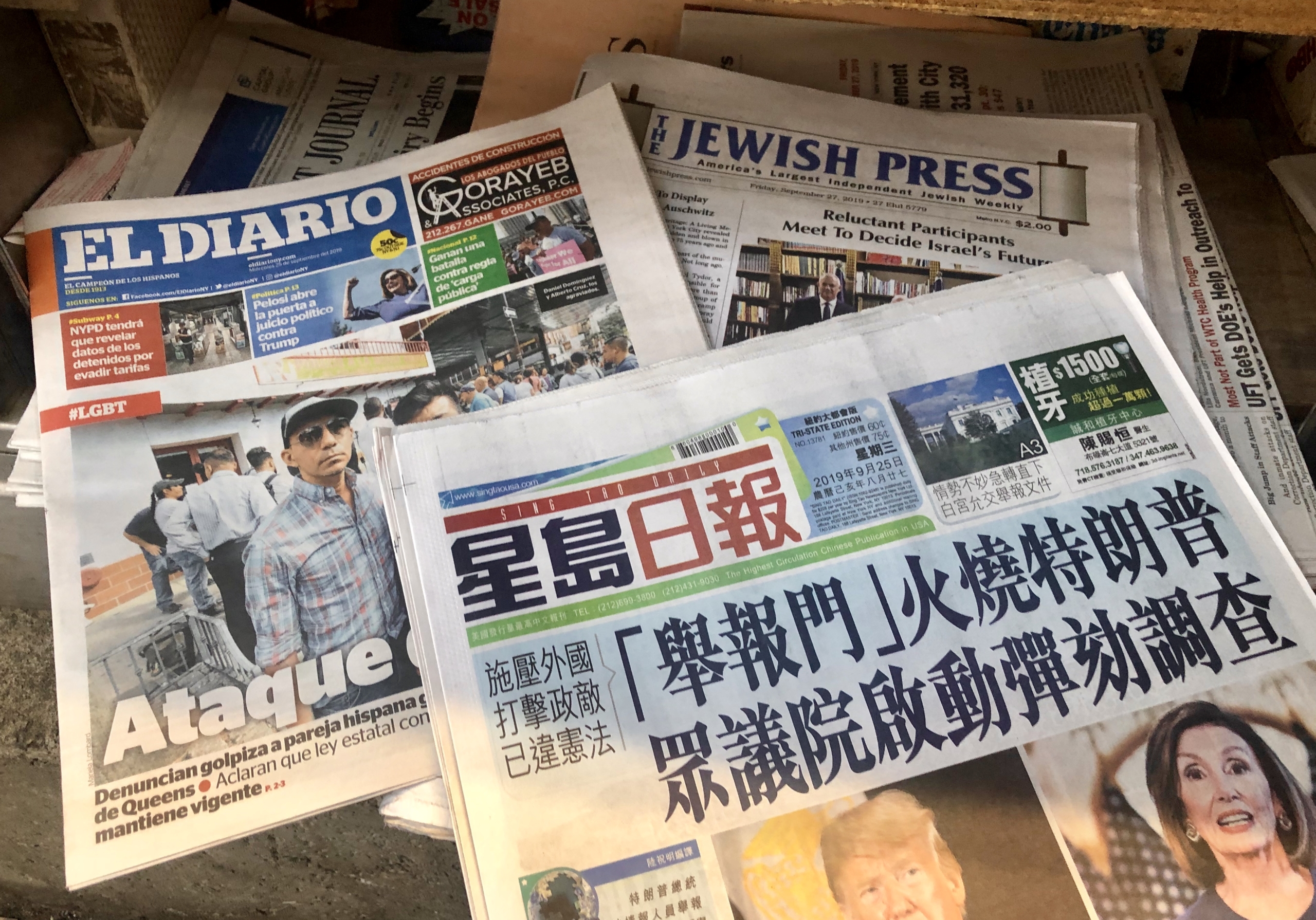When scammers in New York’s Chinese community began to prey on elderly women, stories of immigrant families losing their life savings filled the local Chinese press. Soon, articles documenting the scam appeared in larger outlets, until the story ultimately made it to the New Yorker in 2017.
El Diario, a Spanish-language daily, reported on the presence of the gang MS-13 in suburban Long Island as early as 2011. Soon after, outlets including Newsday and the Daily Beast echoed El Diario’s journalism.
And in 2017, after a French-language outlet, Infos Time, reported on the brutal assault of a Bronx man originally from Burkina Faso, the story appeared in the New York Times.
Much of life in New York City happens in languages other than English. New Yorkers, 3.2 million of whom are immigrants, speak a combined total of more than two hundred languages, according to the city’s most recent annual immigration report. A 2013 study from the Center for Community and Ethnic Media found that between 2.95 and 4.5 million New Yorkers consume ethnic media. As a result, many of New York’s most compelling stories originate in non-English publications.
In each of these cases, the bridge between New York City’s ethnic and mainstream press was Voices of New York, a project that translates select stories into English.
“Because of the language barrier, these stories often don’t have a great impact as stories in the mainstream media,” said Rong Xiaoqing, a Chinese-language translator with Voices of New York and reporter for Sing Tao Daily, a Chinese newspaper with a prominent New York City bureau.
Voices of New York began on September 11, 2001, as an effort to combat Islamophobia in the aftermath of the World Trade Center attacks, and focused at first on the city’s Muslim communities. In 2011, the Craig Newmark Graduate School of Journalism’s Center for Community and Ethnic Media (CCEM) took the project over and broadened the mission to encompass all of New York City’s ethnic and community outlets.
It was fertile ground for finding unique stories––CCEM surveyed 103 ethnic media outlets in New York in 2016 and found that more than half the content of 55 percent of the study’s respondents consisted of original reporting.
The project was imperiled earlier this year when CCEM decided to shut it down. But it was picked up by the local investigative outlet City Limits, which recognized its importance. It felt like a natural fit, says Jeanmarie Evelly, the project’s editor, given that the mission of City Limits “is to always amplify and highlight the voices of the city.”
Ethnic communities represent “a big chunk of New York life,” says Aleksandra Słabisz, a Polish-language translator and reporter for Nowy Dziennik, a Polish weekly, who has been with the project for over ten years. “And for it to be hidden under a surface of some foreign languages, it was a shame.
“American journalists don’t necessarily know Chinese, Bengali, Polish, because these are hard and rare languages,” Słabisz said.
“We want as many New Yorkers as possible to be able to access the reporting that we’re doing,” Evelly said. “And part of Voices of New York is making the great reporting that’s already happening across the city more accessible to more people.”
City Limits executive editor Jarrett Murphy imagines an eventual hub where ethnic media comes together to translate journalism from English into a third language.
“There was ethnic media before there was a United States of America,” says Carlos Rodríguez, a Spanish-language translator and reporter for El Diario, citing Benjamin Franklin’s colonial-era German newspaper. “We may pick up the same news…but it’s a different point of view, different perspective.”
And as New York City prepares for a competitive election season in 2021, with many incumbents facing term limits, Murphy sees sharing information across platforms as vital not only to casting an informed ballot, but also to understanding the larger picture of city government. “We’ll probably see—in a lot of language and ethnic groups in the city—we’ll be seeing pioneering first-time candidates,” he said.
But for Słabisz, the project remains personal. “I like to be abreast of what’s happening in the Polish community. Ever since I came to the States, I feel like it’s become my extended family. I just really like to know what’s happening out there.”
Savannah Jacobson is a contributor to CJR.


